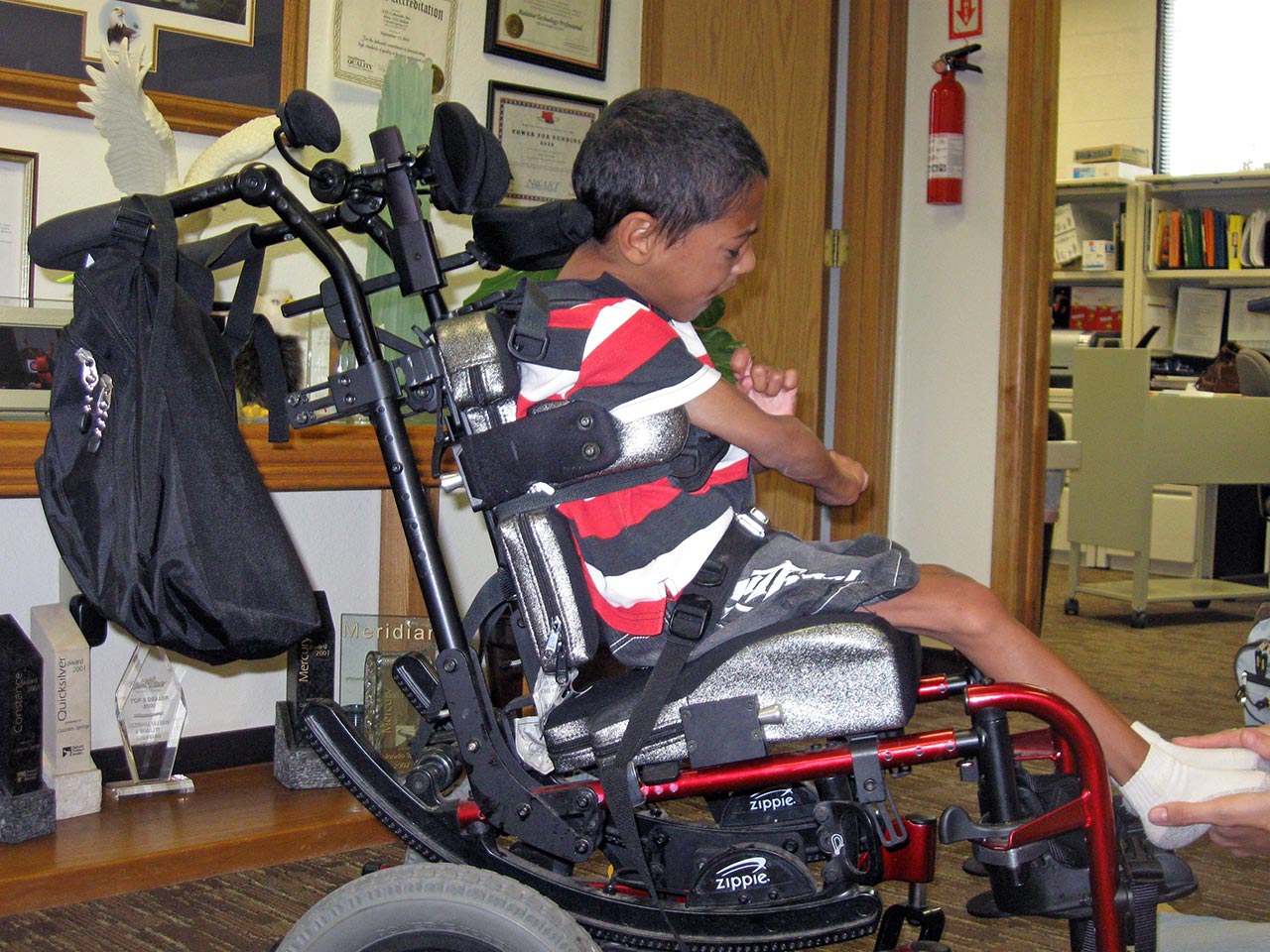Evaluation, Simulation, and Dynamic Seating Trials
Michelle L. Lange, OTR/L, ATP/SMS
Recently a therapist asked me how she could recommend Dynamic Seating components if she didn’t actually try these with a client. Great question! It is not typically realistic to conduct Dynamic Seating trials as one would need to attach Dynamic Seating components on a client’s wheelchair for trial and often the frame would need to be modified (i.e., for Dynamic Rocker Back interface) to accept these components. A similar situation occurs with molding seating. Molded seating cannot truly be simulated without a shape capture and/or providing the fabricated molded seating system. Instead, clinical reasoning is used to rule out other seating categories and determine if molded seating is indicated.
Here are some suggestions for simulating a Dynamic Seating Trial to identify if Dynamic Seating would be appropriate during an evaluation:
1. Dynamic Back
If you are working with a client who extends within their seating system, particularly at the hips, a Dynamic Back may be indicated. But how is this determined without actually trialing a Dynamic Back?
Sit behind the client while sitting on the edge of a mat table. When the client extends at the hips, slowly move back approximately 10 degrees until the client’s tone relaxes and extension decreases and then slowly move the client back to an upright seated posture. If the client extends against you, if their tone reduces with posterior movement and you can return the client to upright, a Dynamic Back is indicated.
If a client often ‘rocks’ from their hips, seeking out movement, a Dynamic Back will move with the client – providing movement without damaging the equipment.
2. Dynamic Footrests
If you are working with a client who extends within their seating system, particularly leveraging off of the footplates, Dynamic Footrests may be indicated. But how is this determined without actually trialing Dynamic Footrests?
Swing the footrest hangers to the sides. Without this leverage, the client may be unable to extend within the seating system or may extend only at the knees (rather than also at the hips). If you notice a decrease in overall extension, Dynamic Footrests are indicated.
Another strategy is to try and move the client’s foot on the footplate during active extension. If you cannot move the foot on the footplate due to significant force, Dynamic Footrests are indicated.
3. Dynamic Head Support hardware
If you are working with a client who extends with force against their head support, Dynamic Head Support hardware may be indicated. If the client has broken the head support or mounting hardware, a dynamic solution may also be indicated.
Move the head support pad posteriorly approximately 2” and place a 2” thick piece of foam between the head support and the client’s head. As the client extends, note if this piece of foam is compressed. If it is, Dynamic Head Support hardware is indicated.
Another strategy is to place your hand between the head support pad and the client’s head. During extension, if you feel significant force, Dynamic Head Support hardware is indicated.
Other resources which may be helpful include our Clinical Guidelines- Increased Muscle Tone, Clinical Guidelines – Providing Movement. For sample justification wording, please go to our Funding page.
How do you determine if a client would benefit from Dynamic Seating during your evaluation? I’d love to hear from you!

Without his feet in contact with the footplates, Taylor shows extension in his knees, however his pelvis remains in contact with the seat and overall extension is reduced. Dynamic Footrests allowed his feet to be on the footplates, but also allowed knee extension to reduce overall tone.
Watch our Quick Class on Assessment here.
Updated 2/12/2024

Very nice explanation and great examples. Thank you!
Sharon,
Thanks for your comment! We hope this is helpful to you and the clients you work with!
Michelle
Michelle,
Practical and clear methods to determine if dynamic components would be beneficial for a client, for health professionals unfamiliar with dynamic seating . Great job
Thanks very much, Missy!